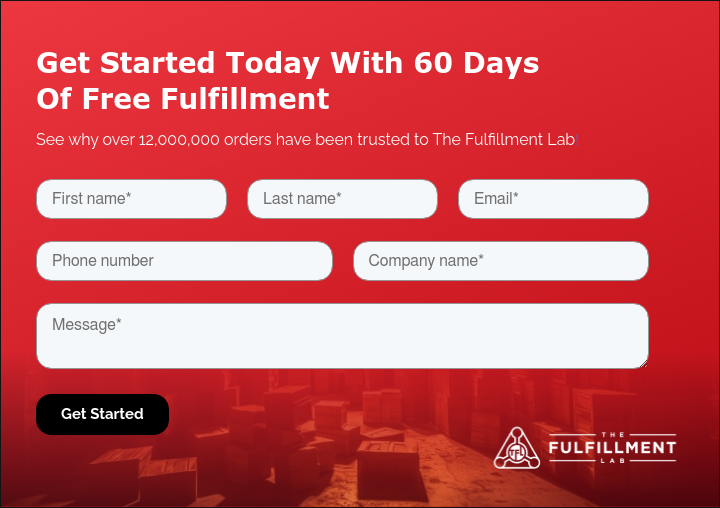Customer Experience Metrics (CX Metrics): Types, Tips & KPIs
Are you providing a superior customer experience? Today, customer experience has surpassed product and price as the number one way many companies compete, and for good reason: Studies show that 86% of buyers are willing to pay more for great customer experiences! Of course, to understand if you’re delivering on expectations, you need to collect customer experience metrics.
What Are Customer Experience Metrics?
Customer experience metrics are the ways in which companies track and measure their customer experience. By collecting feedback from customers, companies can set benchmarks to compare and assess how they’re doing over time. They can also use this feedback to improve products and services, inform sales strategies, refine marketing messages, and more. There are a variety of customer experience metrics companies can use (and it’s recommended that they use more than one) which we’ll cover shortly.
What Is Customer Experience (CX)?
Before delving into customer experience metrics, it’s important to understand just what the customer experience (CX) is. CX is the impression customers get from a company as they move through their entire buyers’ journey. Instead of simply focusing on one aspect of interaction (such as customer satisfaction), a CX strategy takes into account every interaction across numerous touch points, including:
- Encountering its marketing and advertising efforts
- Learning about a company from peers on social media
- Engaging with and navigating a company website
- Making a purchase and going through the online transaction process
- Experiencing positive or negative shipping and delivery promises
- Interacting with customer service support (live and automated)
- Requesting after-purchase support (returns, questions, concerns)
Types Of Customer Experience Metrics
Because there are many touch points in the customer journey, there are many CX metrics to consider. Here are eight of the most common key performance indicators (KPIs) used by companies and marketers.
Net Promoter Score (NPS)
NPS is a valuable CX metric, and critical when it comes to understanding customers’ likelihood to recommend a company’s product or service to someone else. This is often accomplished with an NPS survey, which determines if customers are promoters (highly satisfied and likely to recommend), passives (ambivalent), or detractors (highly dissatisfied and likely not to recommend).
Customer Satisfaction (CSAT)
One of the most used CX metrics, CSAT is a simple measurement using a scale of 1 to 5 to measure is a customer was satisfied with a one-time interaction. This is most often used when it comes to customer service or support; Google or Facebook ratings are a good example of CSAT.
Customer Lifetime Value (CLV)
CLV attempts to determine the net profit associated with a customer. Rather than look at a customers’ value on a purchase-by-purchase basis, it measures their value across the entire relationship. This is especially valuable for companies with multi-year customer contracts (for example, an internet service provider) and for spotting attrition (a customer starts using products or services less frequently).
Customer Effort Score (CES)
A pure transactional metric, CES or contact resolution asks a customer how easy it was to solve their problem following an interaction. This is different from CSAT as it helps identify whether customers find interactions effortless or whether they consider them to be a challenge. By reaching out to those who are struggling, churn (another metric covered here) can be reduced.
Customer Retention Rate (CRR)
How likely is a customer to do business with you again? CRR (sometimes referred to as Net Retention Index, or NRI) seeks to get to the bottom of this, by measuring how well a business retains customers over a specific period of time. This metric goes hand in hand with churn (the higher your retention, the lower your churn).
Loyalty Redemption Rate (RR)
Many companies have loyalty programs, and RR looks at whether customers are actively engaging with it. This helps identify which customers are the most enthusiastic loyalty members and indicate which types of points and rewards are redeemed more than others. A number of factors influence RR, such as the perceived value of a program, ease of earning and spending points, expiration dates, and variety of rewards.
Average Handling Time (AHT)
A recent survey reveals that hold time (57%) is the biggest pet peeve among customers. Of course, there are other issues with handle time, such as being passed from rep to rep, automated mazes, and (accidental?) hang-ups. Since the majority of customers still resolve their issues via phone, this metric looks at the average length of contact for a customer on a call in order for companies to find ways to reduce high AHTs.
Customer Churn Rate (CCR)
Customer churn rate (or lost business value) determines how many people have stopped using a company's products or services by looking at the total number of lost customers within a defined time period. Understanding churn is very important as it has been proven that acquiring a new customer can cost five times more than retaining an existing one.

Customer Experience KPIs: Key Reasons To Monitor
It’s no longer enough to offer the best product or the lowest prices. Today, customers know they have options, and if they’re not feeling appreciated or respected, they’ll look elsewhere. To ensure the longevity of your business, you’ll want to keep and eye on those CX KPIs.
Understanding CX KPIs helps businesses to:
Grow Brand Loyalty
Companies can ensure satisfied customers remain that way through special promotions, programs, etc. Not only will this help keep them around, it can turn them into brand advocates who regularly recommend your product or service to others.
Turn Passives Into Promoters
Passives may be on the fence about your company; with a little extra TLC, they may be able to be converted into promoters who will help grow your business.
Avoid Negative Word-of-Mouth
By “making things right” with known detractors, you can persuade them not to leave brand-damaging comments about your company on review sites.
Improve Customer Service
From handling times to problem resolution time, CX KPIs can identify areas where improvements can be made.
Deliver Consistent Service
Are some customers highly satisfied while others are extremely dissatisfied? CX KPIs may be able to fill in the gaps to determine why there are such varied opinions regarding your product or service.
Identify Problem Employees
Are customers consistently complaining about and/or poorly ranking certain employees? If so, this is an opportunity to retrain them.
8 Tips To Measure Customer Experience Effectively
Ready to start collecting customer experience metrics of your own? Here are eight things to keep in mind when measuring CX.
1. Get Real-Time Results
While some questions should be follow-ups (you can’t ask someone how they’re enjoying their new cookware before it ever ships), the best time to ask for customer feedback is when an experience is fresh in their mind; if you want to long, they may not recall what made the interaction a positive or negative one. Asking for feedback immediately following a transaction is the best way to get truthful and accurate responses.
2. Run Fast CX Surveys
CX surveys are a great way to collect customer feedback, but don’t take them (or your customers’ time) for granted. Surveys should be quick and to-the-point, only asking the most important questions. Otherwise, if you abuse customers’ time, they may drop out during the survey, breeze through it and answer questions inaccurately just to be done with it, or ignore it altogether.
3. Map The Customer Journey
By creating a customer journey map (a visual story of your customers’ interactions with your brand at every touchpoint), business leaders can put themselves into their customers’ shoes and see things from their perspective. This also helps determine at which touch points you’ll want to ask for feedback and how you’ll go about doing it.
4. Look For CX Feedback Everywhere
While surveys, pop-ups, and other methods you use to obtain feedback are great, don’t forget to check out the feedback that already exists elsewhere! That means looking at third-party sources such as online review sites, social media posts, etc. All this helps better inform your CX strategies.
5. Move Data To Action
Too often, valuable feedback that businesses collect just collects dust. Make sure you mobilize this data, getting it to the right people within your organization who can make sense of it and pass along the findings so that action can be taken.
6. Align Your CX KPIs Around Value
Companies need to collect CX metrics relevant to their business. That said, it’s probably not necessary to measure every type of KPI we highlighted (don’t ask your customers for feedback you don’t know how to act upon). Nate Jones, Director of Customer Support at SimpleNexus had this to say: ”No matter which metrics you choose to use, make sure they are predictive of the outcome you are trying to avoid or promote. Too many businesses gather the metrics because they feel like they are supposed to and don’t understand how to get the value out of them.”
7. Connect Metrics With Teams
What do we mean by this? CX KPIs can impact many departments within a company (marketing, sales, customer service, R&D, etc). So, be sure that you connect the dots between what customers are saying and how it affects various departments. CX is not its own initiative; the results of its metrics can be far reaching!
8. Focus On The Future
While understanding what has happened is important (e.g. how many customers did we lose? What were our conversion rates?), progressive marketing measurement can help answer the question, “what will happen?” Being proactive with CX measurement results can aid in customer retention, building loyalty, and more.
FAQs On Customer Experience Evaluation
How Do I Measure Customer Experience?
You can measure customer experience in two main ways. First, ask customers directly with short post-interaction surveys to get survey-based metrics, like CSAT (satisfaction rating), NPS (loyalty score), and CES (effort score). Second, track your organization’s customer support data (speed, efficiency, and quality), along with other core KPIs: churn, repeat purchases, and online feedback.
What Are The 4 P's Of Customer Experience?
In customer experience (CX), the 4 P’s are often defined as: People (staff and culture), Processes (how work gets done), Platforms (tools and tech), and Performance (outcomes, KPIs, and results for customers).
What Are The 5 E's Of Customer Experience?
When measuring customer experience, the 5 E’s often refer to: Entice (attract interest), Enter (first interactions), Engage (ongoing value), Exit (end of interaction), and Extend (follow-up, loyalty, and long-term relationship).
Improve Your CX Metrics With Fulfillment Marketing
It’s no longer enough to compete on product or price. Today’s customers expect more! By measuring customer experience KPIs, companies can collect the feedback they need to deliver superior customer experiences across the entire customer journey.
Another great way to elevate your customer experience is through fulfillment marketing. Fulfillment marketing, a concept invented by third-party logistics company The Fulfillment Lab, combines fast shipping, transparency, and customization—without sacrificing scalability.
The Fulfillment Lab allows you to leverage insights collected through customer experience metrics to deliver a personalized experience (even at mass volume) that will keep your customers happy. Learn more about The Fulfillment Lab and fulfillment marketing here.



